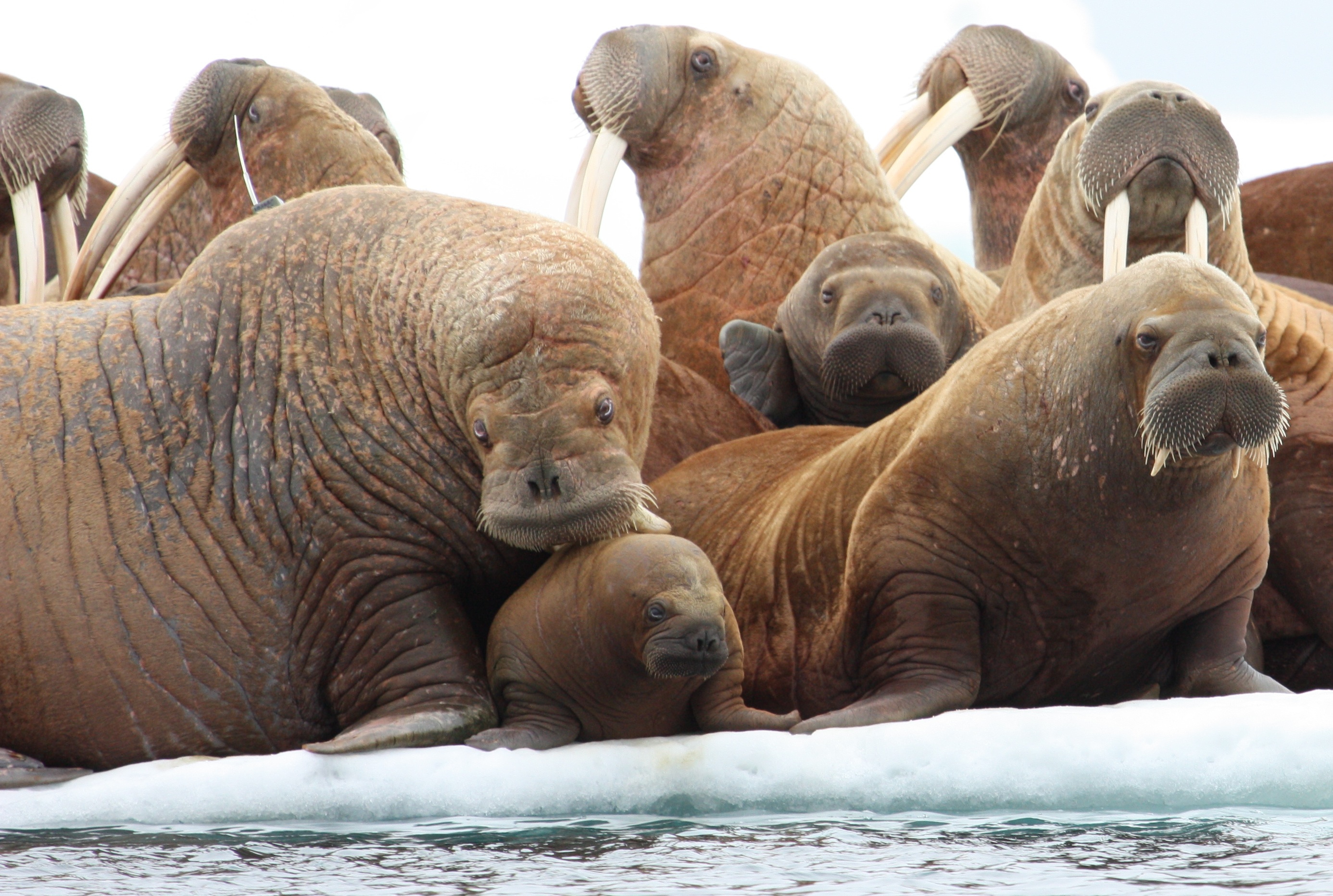
Walruses Forced Ashore as Arctic Ice Disappears

Arctic summer sea ice is the walrus equivalent of a maternity ward and a mall food court.
But in the past five years, warming temperatures have caused substantial ice melt and left little to no ice for resting between feeding dives or giving birth, leading Pacific walruses to change their habits, U.S. Geological Survey scientists announced at a news conference in Anchorage, Alaska, on Wednesday (Nov. 14).
When sea ice disappeared, the bewhiskered, bellowing mammals spent more time on land and foraged close to shore, instead of at their rich feeding grounds at sea. Females also gave birth on land, putting babies at risk of trampling by adults. In addition, walruses spent more time traveling at sea, putting them at risk of running into ships or other human activities. The research was presented at the news conference and published in this month's issue of the journal Marine Ecology Progress Series.
The study tagged 251 walruses in the Chukchi Sea and tracked their movements from 2008 to 2011. Researchers could see on an hourly basis when animals hauled out on ice or land and whether they were in the water. The project was a joint effort between American and Russian scientists.
This was the first time females and young calves were part of this shift in behavior, which was first observed in 2007.
How the changes in behavior will affect the Pacific walrus can't be answered yet, the researchers said. Open questions include: Will the different food sources available near-shore sustain healthy females and baby walruses? Is there enough food to feed thousands of the tusked animals, who average 1,760 to 4,000 pounds (800 to 1,810 kilograms)? What will happen as retreating ice encourages more development and exploration in the Arctic?
"This information gives us a better idea of what kind of stressors that Pacific walruses are experiencing right now," said Chad Jay, a U.S. Geological Survey research ecologist and co-author of the study. "We expect to see that this behavior will continue … into the future as we experience more climate warming."
Sign up for the Live Science daily newsletter now
Get the world’s most fascinating discoveries delivered straight to your inbox.
The Pacific walrus is being considered for listing as threatened under the Endangered Species Act. There are about 129,000 Pacific walruses in Alaska, according to the latest estimates.
Reach Becky Oskin at boskin@techmedianetwork.com. Follow her on Twitter @beckyoskin. Follow OurAmazingPlanet on Twitter @OAPlanet. We're also on Facebook and Google+.










